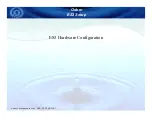
English
12
(4) Use a vacuum cleaner to remove dust and foreign objects
on the surface of the heat exchange element.
(Refer to figure 12)
• Use the vacuum cleaner equipped with a brush on the
tip of the suction nozzle.
• Lightly contact the brush on the surface of the heat
exchange element when cleaning.
(Do not crush the heat exchange element while cleaning.)
CAUTION
• Do not clean touching strongly with a vacuum cleaner. This
may crush the mesh of the heat exchange elements.
• Never wash the heat exchange element with water.
• Have your dealer professionally clean the filter if it is very
dirty.
(5) Put the heat exchange element on the rail and insert it
securely in place.
(6) Install the air filter securely in place.
(Refer to page 11 (4.1, (4)))
(7) Install the maintenance cover securely in place.
(Refer to page 11 (4.1, (5)))
4.3 SEASONAL MAINTENANCE
<VKM-GAMV1 series only>
4.3.1 AT THE BEGINNING OF THE SEASON
(1) Check below
• Are the indoor and outdoor unit intake and outlet vents
blocked?
Remove anything that might be blocking them.
(2) Turn the power on
• When the power comes on, the characters in the remote
controller display appear.
(To protect the unit, turn the power on at least 6 hours
before operating it. This makes operation smoother.)
(3) Supply water
(Start of heating season)
4.3.2 AT THE END OF THE SEASON
(1) On a clear day, use fan only operation for around half a
day to thoroughly dry out the interior of the unit.
• Refer to page 7 for details on fan operation.
(2) Turn off the power
• When the power is shut off, the characters in the remote
controller display disappear.
• When the power is on, the unit consumes up to several
dozen Watts of power.
Turn off the power to conserve energy.
(3) Stop water supply
(End of heating season)
4.4 INSPECTION AND MAINTENANCE OF THE
HUMIDIFIER <VKM-GAMV1 series only>
• Have your dealer do the following inspections in order
to get the longest use.
• In order to prevent harmful bacteria from generating, ask
your dealer to do maintenance on humidifying unit portion at
the beginning or the end of the heating season.
NOTE
• When the solenoid valve fails, the remote controller does not
display any error code.
Usage under that status will lead to insufficient humidification
and increased tap water consumption.
The solenoid valve should be checked at the beginning of the
heating season.
For dealers
4.5 INSPECTION OF THE FAN MOTER
NOTE
• When the fan motor fails, the remote controller does not dis-
play any error code.
Usage under that status will lead to insufficient ventilation.
The air supply and exhaust fans should be checked once
every one or two months.
You can make a simple check such as below way.
To check the wind flow, hold a bar of which the end has a
string or other similar lightweight item over the supply grille
and exhaust grille.
4.6 REPLACING THE HUMIDIFIER ELEMENT
<VKM-GAMV1 series only>
• The humidifier element needs to be replaced regularly.
The humidifier element should in general be replaced once
every three years when supply water is soft water, but out-
side factors (If the water quality is hard water, etc.) as well
as operating conditions (24-hour-a-day air conditioning, etc.)
may shorten its productive life.
• Contact your dealer if you have any questions.
5
TROUBLE SHOOTING
5.1 THE FOLLOWING SITUATIONS ARE NOT MAL-
FUNCTIONS
• Operation does not start.
<Symptom>
The icon “
” (under centralized control) is dis-
played on the remote controller and pressing the on/off but-
ton causes the display to blink for a few seconds.
<Cause>
This indicates that the central device is controlling the unit.
The blinking display indicates that the remote controller can-
not be used.
Inspected
part
Content of maintenance
Problems if
maintenance
is not carried
out
Items to be
inspected
Solution
Strainer
(80-mesh)
Check for
clogging
Clean if
clogged.
Insufficient
humidifying.
Check o-ring
for cracks
Replace if
cracked.
Leaking.
Feed water
tank
Check for
operation of
float switch
Clean if it
does not
work properly
due to build-
up.
Insufficient
humidifying.
Overflowed
feed water
tank.
Check for dirt
Clean if very
dirty.
Weak fan
strength.
Reduced
humidifying
capacity.
Solenoid
valve
Check for
shutting and
opening.
Check in a
similar fash-
ion when
checking the
float switch
operation.
Replace if it
doesn’t work.
Insufficient
humidifying.
Overflowed
feed water
tank.
(Increased
tap water
consumption)
01_EN_3P130767-3G.fm Page 12 Monday, March 5, 2007 10:05 AM





































